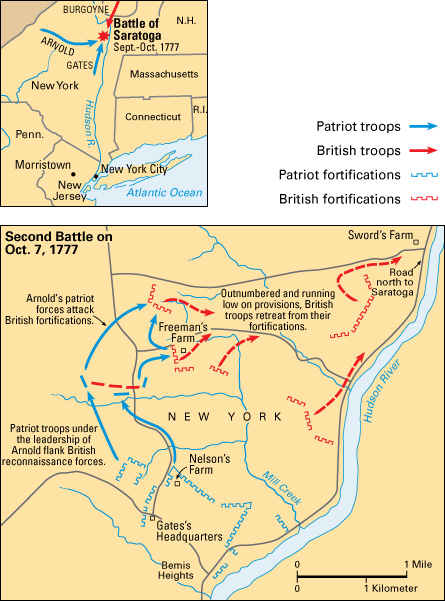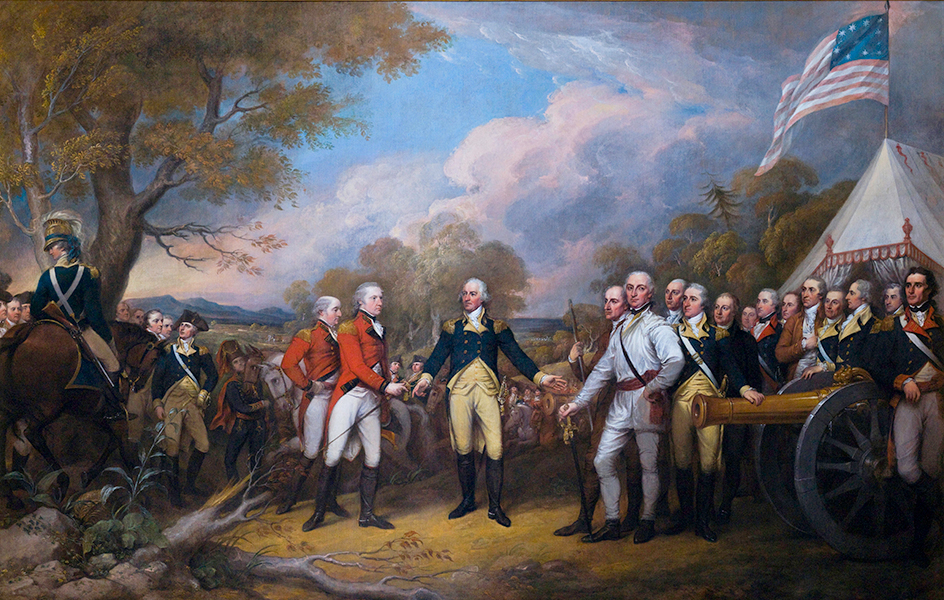Saratoga, Battle of, was an important American victory over the British in the American Revolution (1775-1783). In September and October 1777, an American army defeated a smaller British force in two battles near Saratoga, New York. Major General Horatio Gates commanded the American force, and Lieutenant General John Burgoyne led the British. The Battle of Saratoga is also known as the First and Second Battles of Freeman’s Farm, after a farm on the battlefield. The Americans’ decisive victory helped convince France that it could safely enter the war on the American side.

In June 1777, Burgoyne led an army of 8,000 south from Canada along Lake Champlain and the Hudson River Valley. The British captured Fort Ticonderoga, in the colony of New York, on July 6. But Americans led by Major General Philip Schuyler soon slowed the British advance. They destroyed bridges and blocked trails and river fords. The Americans also defeated smaller British groups that had been sent to find food and supplies. When Burgoyne crossed to the west side of the Hudson in September, his army numbered only 6,000 soldiers.
Gates had an American force of more than 10,000 troops gathered near Saratoga. He established defenses at Bemis Heights, an area of high ground near the Hudson River. On September 19, the Americans turned back a British attack north of Bemis Heights, at the farm of John Freeman. The British suffered about 600 casualties, compared with about 300 for the Americans.

On October 7, Burgoyne sent out 1,500 soldiers to fire cannons at the Americans’ positions. But the American force—which had increased to about 13,000 soldiers—attacked, and the British retreated. About 600 British and 150 Americans were killed or wounded.
Burgoyne’s troops fell back to the town of Saratoga, north of the battlefield. The Americans soon had the British surrounded. On October 17, Burgoyne surrendered to Gates. After the battle, France entered the war as an ally of the United States.

